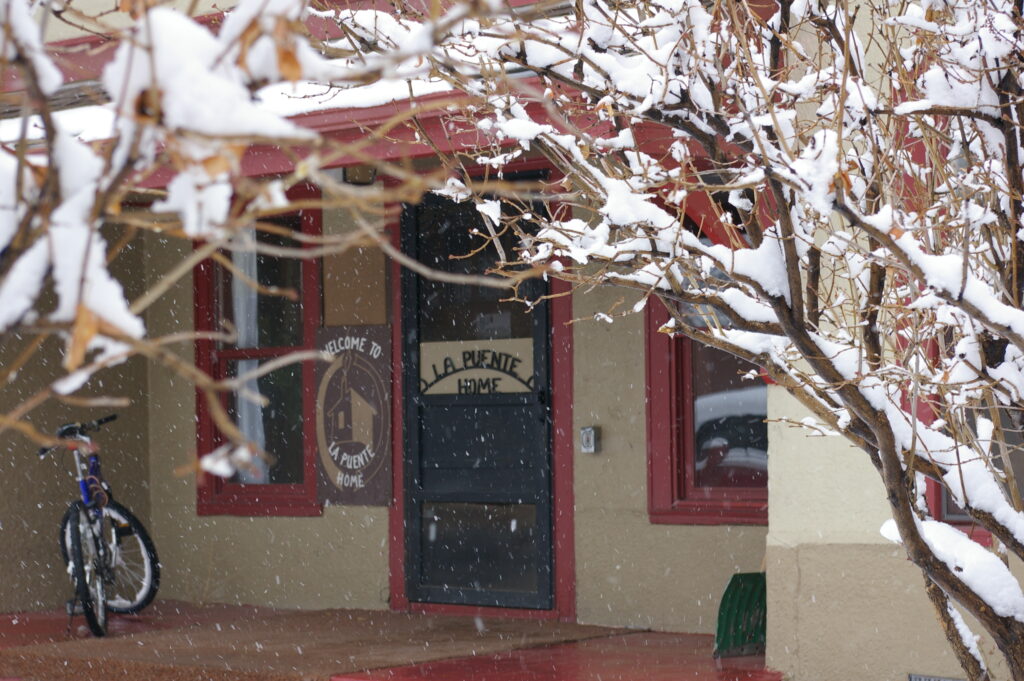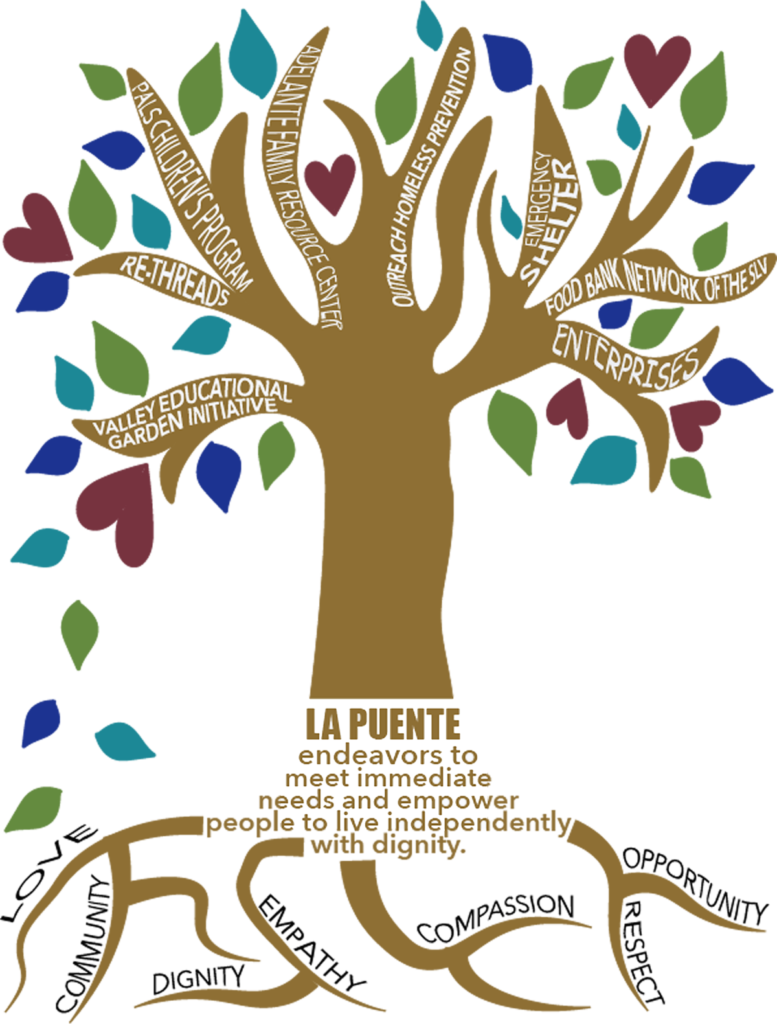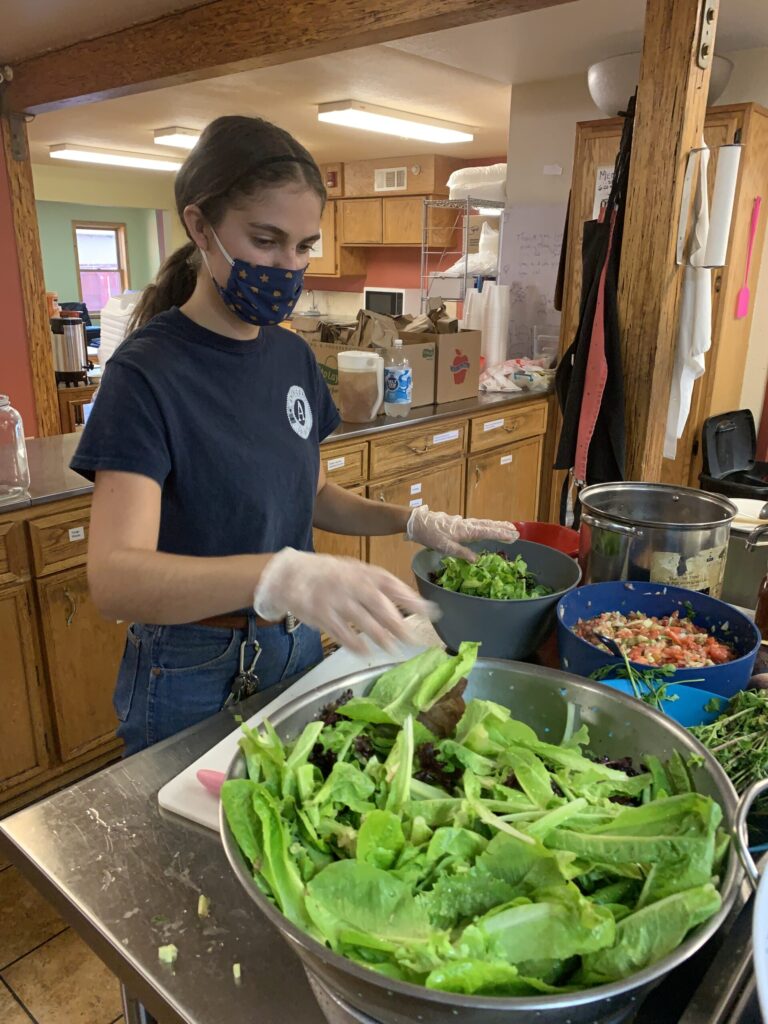La Puente's Founding Story
La Puente has grown into the network of services it is today.
In the winter of 1978, Sister Mary Angelo Lobato saw the need to create a shelter for the Alamosa homeless community after two people froze to death, unsheltered from a severe 20 below night near the river. Sister Lobato was concerned that even more people might die, if there continued to be no place for the homeless to shelter.
Through her conviction and network connections, Sister Lobato was able to open a shelter in Alamosa’s Catholic Church. This shelter space tried to provide for those in need however, the location only had one exit and the local fire department deemed it a safety hazard. But despite their efforts being shut-down, Sister Lobato didn’t lose sight of her vision. Shortly after, Sister Lobato recruited others in the community to aid her dream. Five people showed up at the initial meeting, though none of them knew it at the time, they would later become the La Puente Board of Directors. In addition to Chet and Sister Lobato, the group included Chet Choman, Cece Guzman, Stella Lujan, and Sister Janel Crumb. They established to get a shelter space they would need to open a checking account with $25, each of them added $5.

Alamosa realtor and businessman, Chet Choman, was asked by Sister Lobato to help them find a space, but they had little success. After more than a year of meeting together, the group still had no shelter established. Until the winter of 1979 when Sister Lobato called Chet saying she had found a house for the shelter.
When they reached the house it was completely boarded up. The only access they had was through a broken window and there was blood everywhere. The blood, they learned later, was from a homeless individual who had tried to find shelter from the elements; they had cut their foot rather severely, leaving bloody footprints everywhere. “When we walked into the home…we were afraid we would turn a corner and find a body,” Chet recalled, “It was kind of a mess and all the pipes were broken from the freezing temperatures.”
The building had belonged to La Puente Home, a boy’s home that had lost its funding and was in foreclosure. The La Puente Boy’s Home had a loan with SLV Federal Bank, so Sister Lobato’s group went to the financial institution to see if they could assume the loan. But Lobato’s group didn’t have the money or collateral to purchase the house. “Of course we didn’t have the money,” Chet recalled.
The group met with attorney Rick Jacobs, who had been involved with the previous La Puente Home. They asked Jacobs if they could assume La Puente’s corporation to which he graciously agreed. And when Jacobs asked what they planned to name the shelter, Sister Lobato’s group unanimously agreed that the name would remain “La Puente” (meaning “the bridge” when translated from Spanish to English).
Hearts soaring, the newly established La Puente board returned to SLV Federal Bank and received an allowance to begin making monthly payments on the building, at $300 a month. The mortgage was three payments behind and they promised to be back with a check by the end of the month with a 30 percent down payment.
A couple of days later, the new board members were working to remove boards from the windows of the vacant building. As they worked on the house, they became worried—they didn’t know how they were going to fix the broken pipes until one of the many, many miracles that transpired over the next 40 years occurred. A van with a Florida license plate pulled up, a man got out and asked if he could rent the place, as he and his family had just moved to Alamosa. The board members explained to the man of their plans for the house, but that its broken pipes had to be fixed before anyone could move in. The man chuckled, saying he was a plumber and his trunk was full of plumbing supplies. He proposed he would fix the pipes if he could stay in the house. “That was our first guest,” Chet commented. The man and his family stayed in the house for 6 months and he stayed in the community and volunteered with La Puente for many years.

Finally, in 1982 the shelter opened its doors, making La Puente one of the first rural homeless shelters in the nation. Thousands of people have since found food and shelter within its walls. Chet, now Emeritus Chair, said that next to his 40+ year marriage, this was his second-highest level of commitment. Sister Lobato served as La Puente’s first director, stating she only needed $250 a month to sustain herself and would come up with half of that on her own.
“We all committed to $25 a month for pay,” Chet said, “That was the beginning of it.” There were many times where the board found themselves short financially. Chet, a pragmatist, would often ask the obvious question, “How are we going to pay for this?” To which Sister Lobato would respond, “God will provide.”
“She spoke this simply, without pretension,” said Chat, “It was always a statement of faith.”
Sister Lobato would comment, “If we continue receiving community support and it’s something the Lord wants us to be involved in, He will always provide the support for us to continue.”
Sister Lobato served as La Puente’s director for several years. Happy with the foundation set in place, she was ready to move on to her next calling: the AIDS epidemic.
After Sister Labato, Herb Adkins (who helped La Puente receive its first grant) and Sister Theresa O’Grady served as shelter directors. After their service, La Puente’s board members became concerned that running a homeless shelter almost single handedly would quickly burn out a list of directors. But when a 29-year-old idealist, Lance Cheslock, returned from service work in Haiti and inquired of the position in June of 1989, the board asked if he would commit to at least two years. At $5 an hour, they were afraid that was as long as he would stay. But Lance Cheslock never left, he currently acts as La Puente’s Executive Director.
“He’s remarkable,” Chet said. “You can’t replace someone like that.”
Chet commented that Lance’s style of leadership is to lead by example through selfless service. One example of this was when Lance attended a national homeless coalition gathering in Washington, D.C. While other attendees stayed at a hotel for $380 a night, Lance went to the local homeless shelter where he waited in line for five hours to get in, received one paper towel to dry up after his shower and had to hit the streets by 5 a.m. He suffered a bout with bed bugs following his stay.
Being a humble leader, Lance does not boast about his role at La Puente. “I have always felt like I am more of a witness than a person doing things,” said Lance, “watching the need and watching miracles happen all the time. Over and over again there are little miracles that are patched into what we do, which no one can take credit for. In every budget there is an unwritten line item and that’s called grace.” He smiled then added, “Over and over again, it’s found us—it’s just grace upon grace upon grace”.
Miracles of kindness and generosity like…
When there was no money to pay the staff. Board members privately discussed whether they should wait until the end of the month to let everyone go, but then an individual approached the shelter out of the blue and said, “I heard about what you guys do. I’ve got $1,000. Would that help?”
- When the garden truck broke down, the next day somebody drove up to the garden to ask what was going on there and, within two days, brought a new truck for them to use.
- The shelter rarely has the means to buy groceries but always has a meal for its guests, sometimes through some very creative cooking.
A family was moving out of the shelter into their new house and asked if they could take some dishes with them because they did not have any. Not 15 minutes later, a woman walked into the shelter with a big box of donations and wondered if it would be of use to the shelter. The box was full of dishes, giving the family exactly what they needed.
There have been many miracles that have happened since the start of La Puente. “It would happen time after time after time,” Chet recalled. “Whenever there was a need, that need would be fulfilled.” He said, “It’s those types of experiences that continue to compel us to be involved.”

La Puente’s services have grown beyond the shelter beds and meals for the homeless–it’s evolved into a network of direct service programs that provide for those in crisis. Services include: Adelante, Crisis Prevention Resources, Rural and Street Outreach, ReThreads, PALS, Valley Educational Gardens Initiative (VEGI), Community Education, and Volunteer Coordination.
La Puente has expanded to social enterprise businesses. They promote social justice, provide jobs, and the profits support the La Puente programs. These businesses include Milagros Coffee House, the Rainbow’s End Thrift Stores (in Alamosa, Monte Vista, & Center), and Hunt Avenue Boutique.
With the objective of meeting the needs of the homeless and community members in crisis, La Puente’s services both restore and strengthen people’s lives, so that they can live independently, with dignity.
